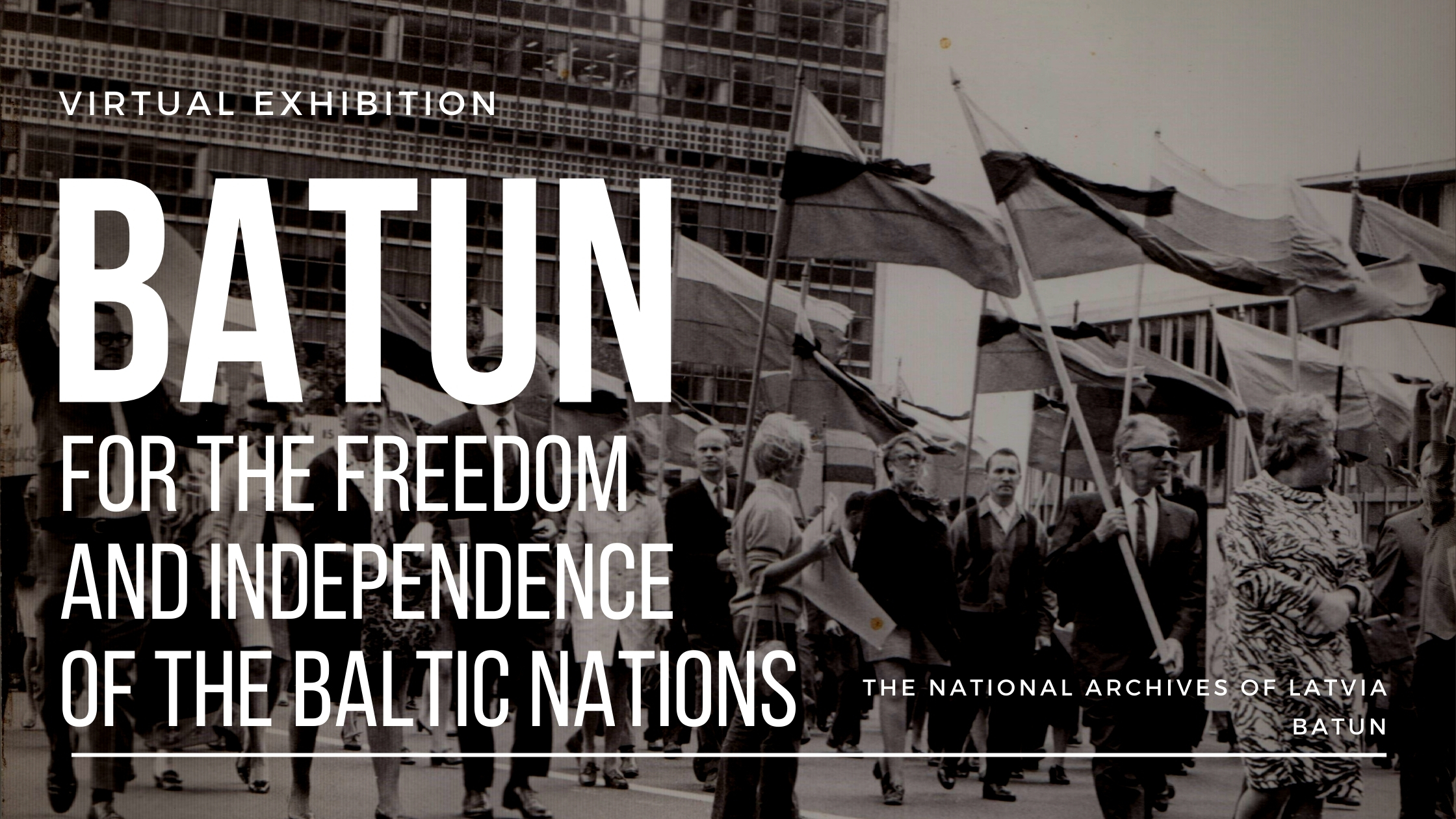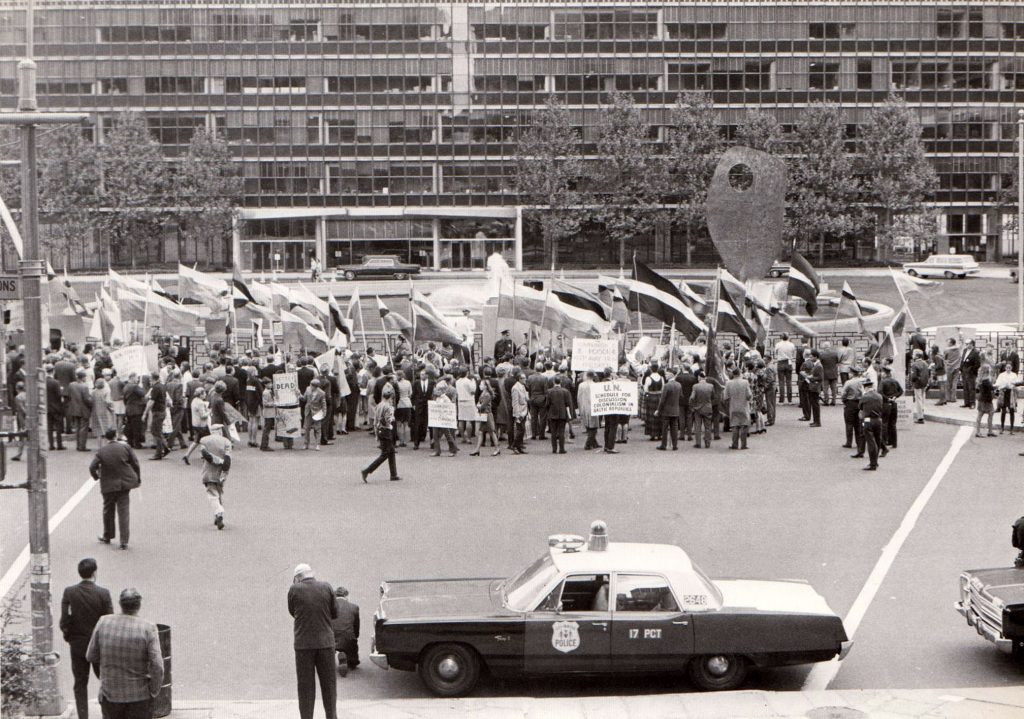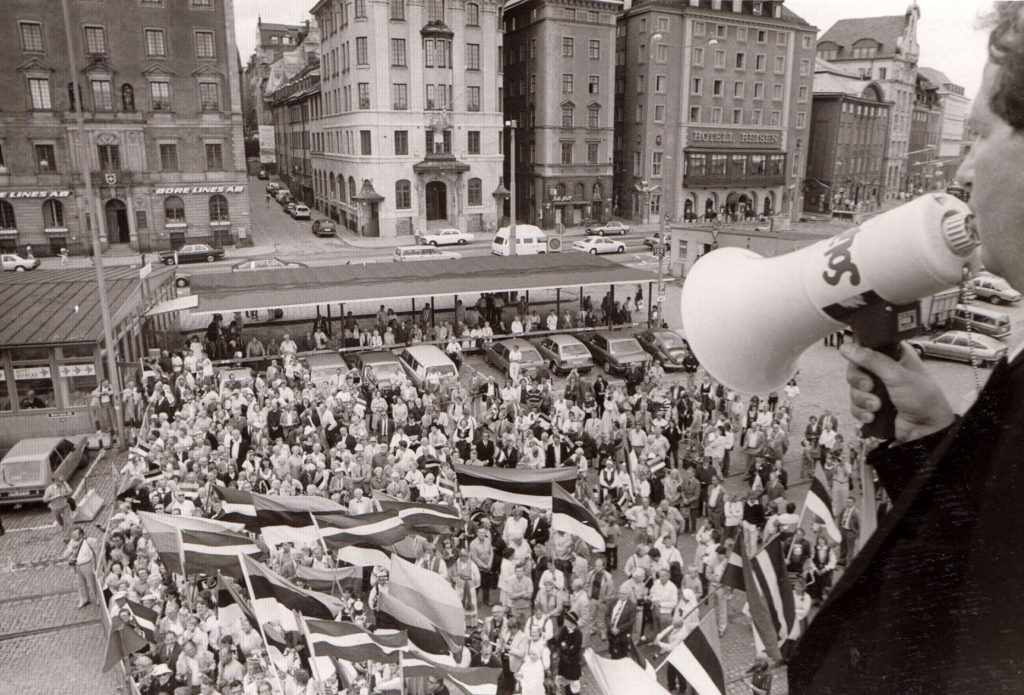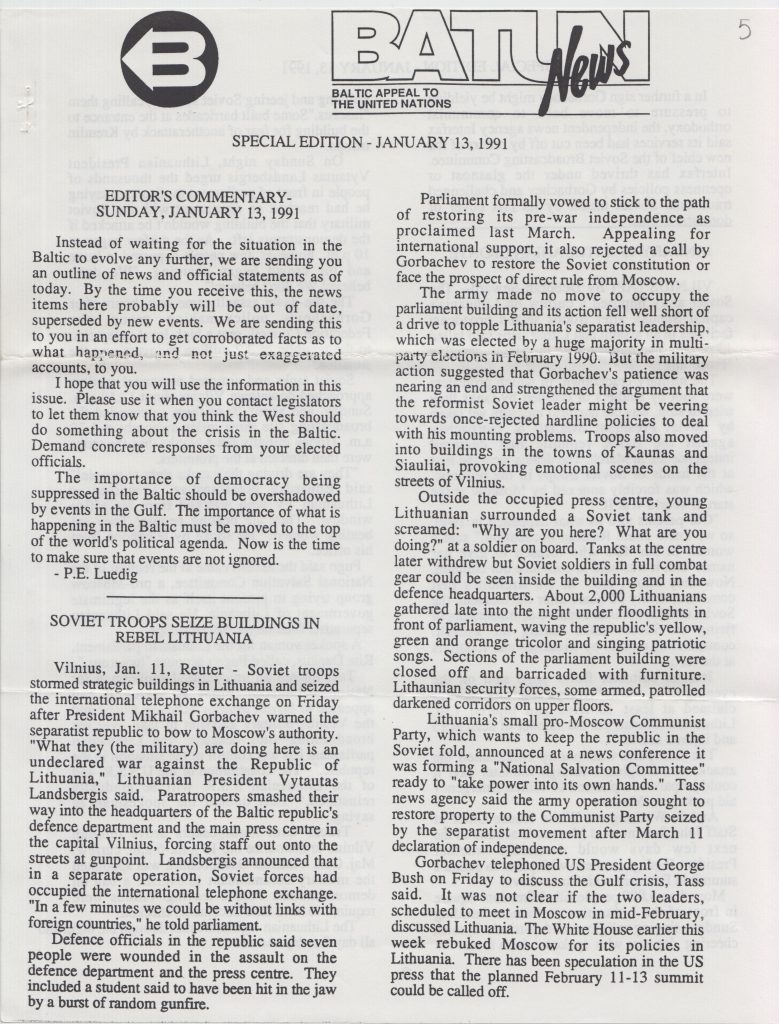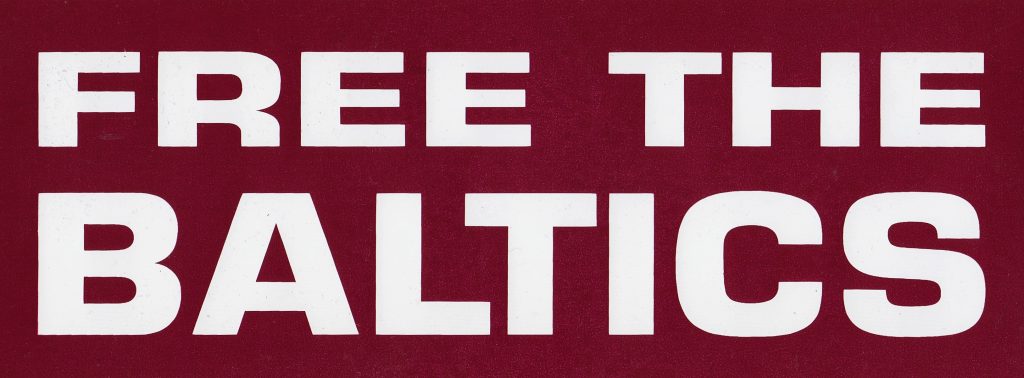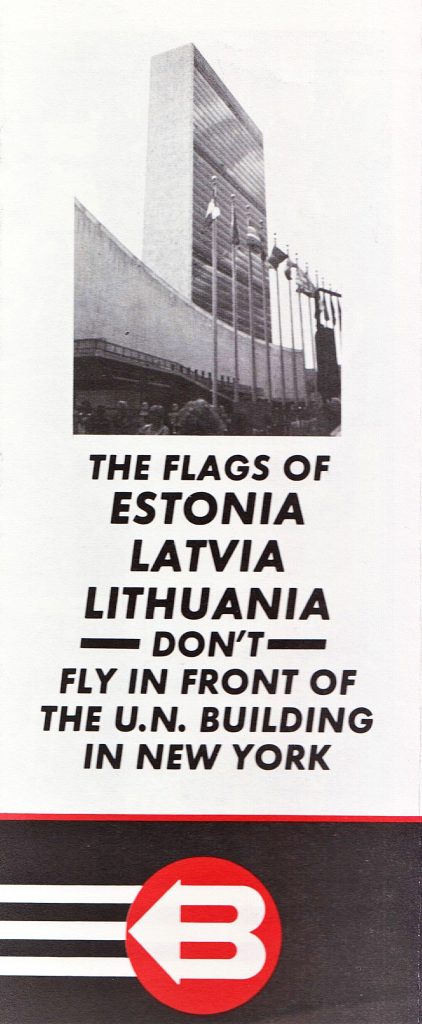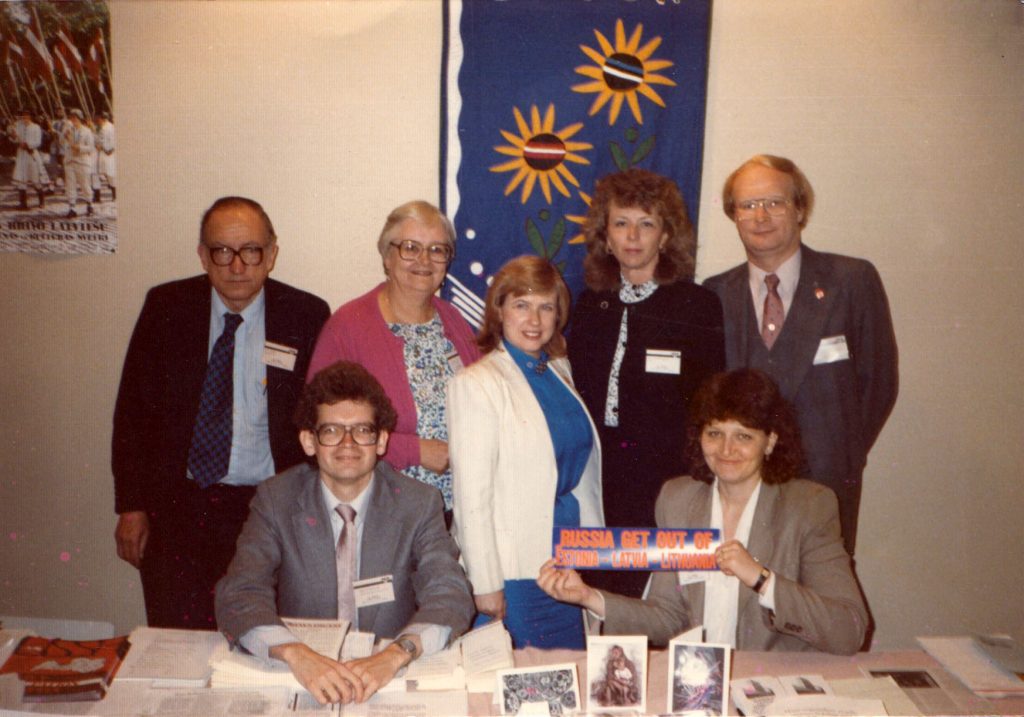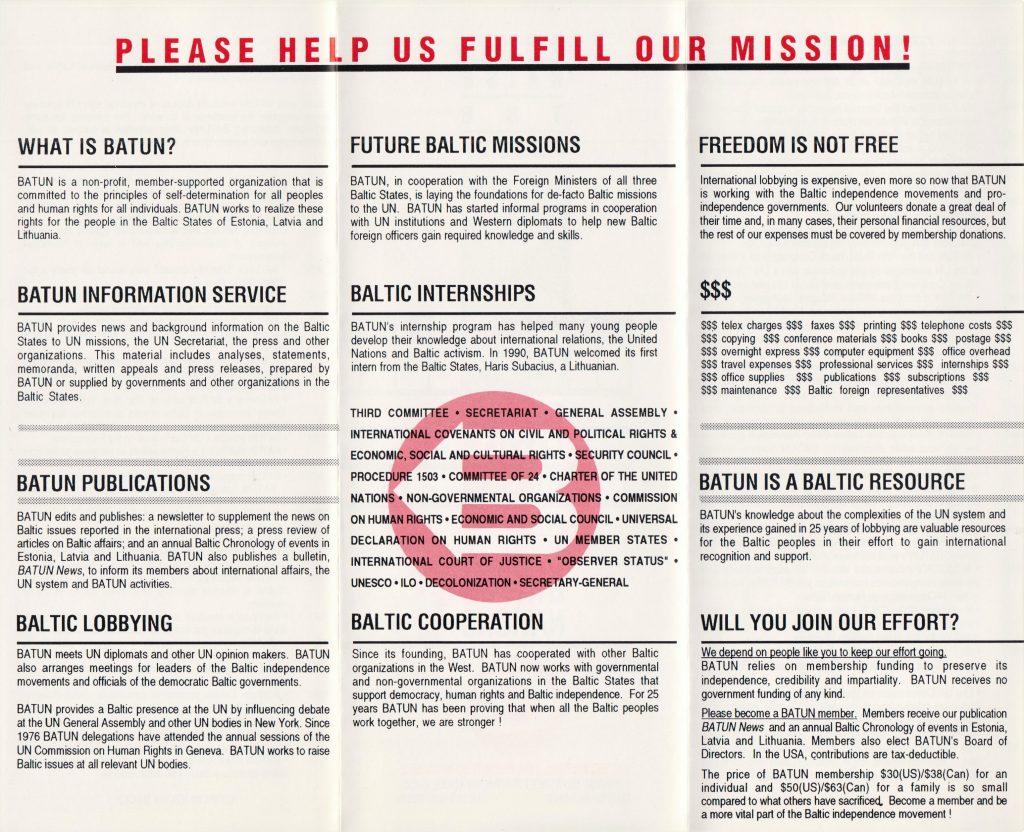Historical background
On 23 August 1939, Soviet Russia and Nazi Germany signed a non-aggression pact called the Molotov-Ribbentrop Pact. The Agreement was supplemented by secret additional protocols in which Stalin and Hitler, in three consecutive secret deals, divided Eastern Europe into two spheres of influence whereby the territorial and political rearrangements were agreed upon. In the summer of 1940, Estonia, Latvia and Lithuania were occupied and annexed by the USSR. In June 1941, the occupational regime of Nazi Germany followed, but in the period from July 1944 to May 1945, the Baltic States came under the occupational regime of the USSR again, which lasted until 1991. The citizens of the Baltic States experienced huge losses – mainly arrests, executions and extrajudicial killings, imprisonment in prisons and camps, and deportation to Siberia. Most Jews died in Nazi Holocaust crimes. Many more Baltic lives were lost among those who were drafted or volunteered to serve in the German or Soviet forces. Those Balts who fought in German forces and survived, later experienced various difficulties in the USSR and the West, as they were considered as Nazis and co-responsible in the Holocaust and other repressions. During the Soviet times, most Balts learned to fear the Soviet authorities, especially the Soviet repressive organs (NKVD (1940-1946), MVD (1946-1954), MGB (1946-1953), KGB (1954-1991)) which used inhuman methods to combat nationalism, dissent, religious and anti-Soviet activities (agitation, propaganda, organizations, etc.). Part of the Balts, especially Lithuanians, formed armed resistance movements (national partisans) in the Baltic forests that fought against the Soviets. The exact number of national partisans is not known, but sources indicate that the number of active fighters in Estonia, Latvia and Lithuania could have been between 60,000 and 80,000. By the end of the 1950s, most partisans had been destroyed or captured by the KGB.
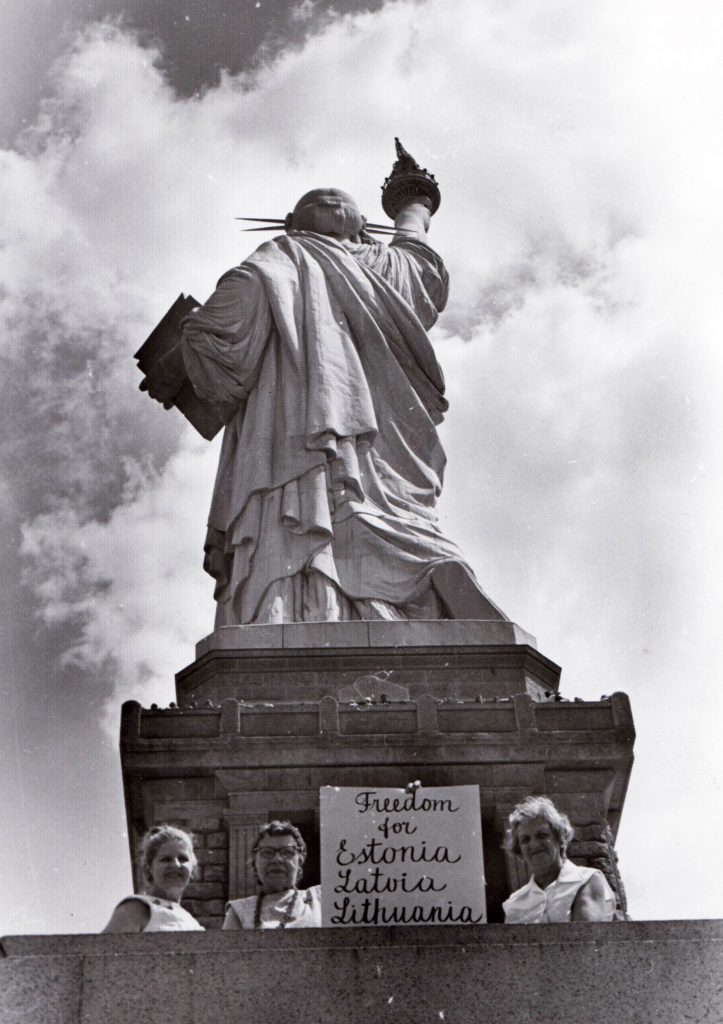
From July 1944 to May 1945, the USSR reoccupied the Baltic States. Those who did not want to suffer the horrors of a second Soviet occupation, decided to escape to the West – approximately 257,000 Estonians, Latvians and Lithuanians fled to Sweden and Germany. While their homelands were occupied, the Baltic exiles developed a considerable political and cultural life in the West. Immediately after World War II, the Baltic diplomats and former politicians who had fled their countries towards the end of the war were the most active. After spending several years in German refugee camps, starting in 1947, the Balts began to emigrate, mostly to the UK, the US, Canada and Australia. In their new homelands, the Baltic exiles established global Estonian, Latvian and Lithuanian organizations that united compatriots from all over the world for common goals. The largest such organizations were in the US – the Estonian World Council, Estonian American National Council, World Federation of Free Latvians, American Latvian Association, Lithuanian World Community, American Lithuanian Council, Lithuanian-American Community, and Supreme Committee for the Liberation of Lithuania. The central organizations of the Baltic exiles were rooted in the vital exile communities scattered throughout the West. The communities had rich cultural lives and an overriding political goal – the restoration of independence for the Baltic States, and preserving the national spirit.
What is BATUN?
BATUN (Baltic Appeal to the United Nations) was one of the many organizations focused on the effort to restore the independence that the Baltic States had lost in 1940. It was an international non-governmental organization and its story begins in November 1965. BATUN was created spontaneously by a group of Estonian, Latvian and Lithuanian volunteers without the backing of any formal organization. The main purpose was to inform the members of the United Nations about the violations of the rights of the Baltic nations and Soviet colonialism of the occupied Baltic States. Before the establishment of BATUN, Baltic actions had been organized at the UN during the first session of the General Assembly, which was held in London in early 1946. The activists were Baltic diplomats and organizations. The latter sometimes acted together with associations of East European organizations, the most prominent of which became the Assembly of Captive European Nations after its founding in 1954. Documents dealing with the right to self-determination of the Baltic peoples, the genocide and deportations of the Balts, or their subjection to forced labor by the USSR were distributed during the General Assembly sessions. The UN responses included the following: from total silence to acknowledgments that the documents had been received; the audience granted to Baltic diplomats by at least one President of the General Assembly in 1947; speeches by many delegates of UN Member States wherein Balts were mentioned sympathetically. But ultimately, the General Assembly turned its back on the Balts and the issue of the Baltic States has never been on the agenda of any UN body. In the 1950s and 1960s, Baltic exile politicians mainly participated in the work of the Assembly of Captive European Nations and the National Committee for a Free Europe and cooperated with the US State Department and other institutions. In the 1960s, the process of decolonization began in the world, a large number of new countries emerged, and the Baltic question also gained a new context. This was one of the main conditions for founding BATUN in 1966 and it was soon apparent that the demands of the lobbying work at the UN were far greater than anyone had envisioned. This virtual exhibition, through the prism of documents stored in the State Archives of Latvia, reflects the activities of BATUN from 1965 until the early 1990s. And describes its role in the political processes related to human rights, the independence of the Baltic States, and their ultimate membership in the United Nations. BATUN continued its activities until the 2000s.
…Our hope is that soon the Estonian, Latvian and Lithuanian flags will fly with the others at the UN instead of being locked out…
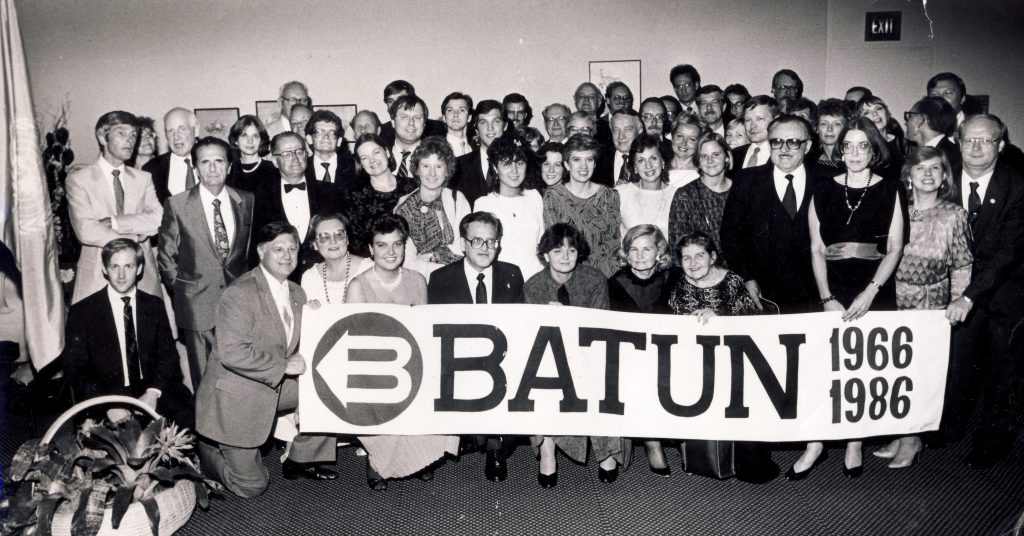
BATUN actions
LOBBYING THE UN MEMBER STATES
BATUN lobbied the United Nations from 1966 to 1991, in support of restoring the independence of the Baltic States. Throughout this time, it was at least implicitly assumed that any means of keeping the Baltic Question alive was a worthwhile endeavor. BATUN lobbied the governments of UN Member States through their diplomats in New York and Geneva. Most of the lobbying was done in face-to-face meetings, as well by sending and receiving letters and documents. During the visits a variety of documents were delivered, such as BATUN memoranda, news from the Baltic States, Baltic samizdat (a clandestine publishing system within the Soviet Union, by which dissidents was reproduced and circulated privately), which by the late 1980s started to openly circulated NGO documents, and by 1990, included the official documents from the governments of the Baltic
countries. The historical themes, which were regularly emphasized in BATUN’s lobbying efforts, included the forcible Soviet occupation of the Baltic States in June 1940, the annexation in August 1940 and the document that enabled these events – the Molotov-Ribbentrop Pact. In addition to using the concept of the right to self-determination, BATUN viewed the issues related to decolonization and the protection of human rights as useful means to lobby for the restoration of independence.
BATUN had approached the UN in the following ways:
- By distributing memoranda documenting specific violations committed by Soviet Union, such as, freedom of information, family reunification, the right to leave and return to one’s country, environmental pollution, religious intolerance, economic exploitation, militarization, the illegal use of psychiatry, and many other topics.
- By attending the Commission on Human Rights session in Geneva to protest the incarceration and treatment of human rights activists and to secure their release.
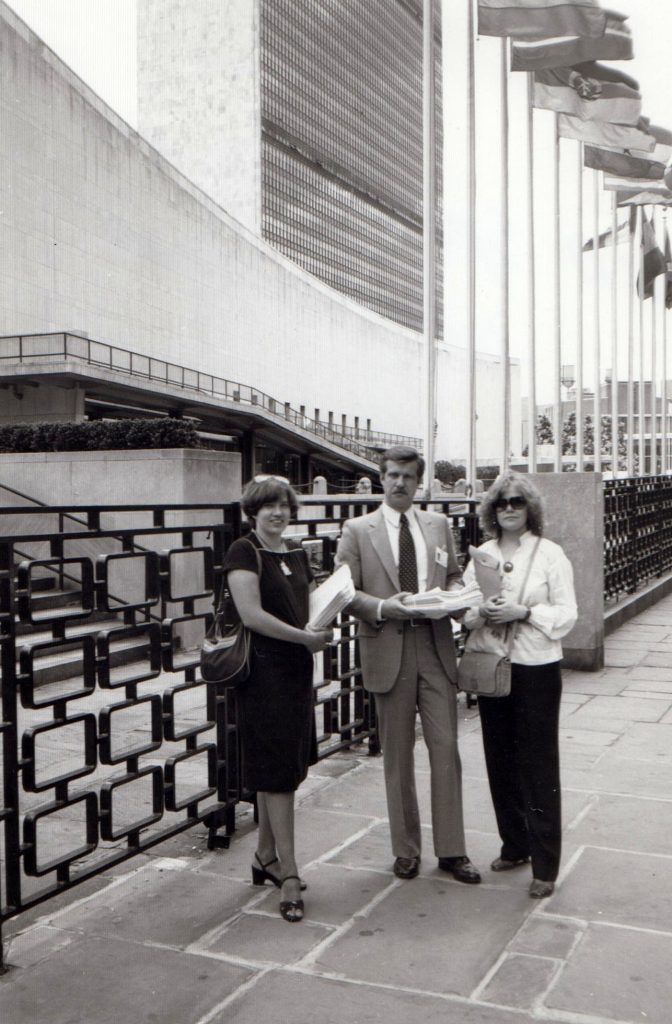
- By participating in special sessions of the UN, such as ones focused on disarmament.
- Conducted campaigns to encourage the Decolonization Committee to investigate the situation in the Baltic States.
- Coordinated and supported the activities of BATUN’s European Director who worked to implement the Baltic Resolution adopted by the European Parliament and get the Council of Europe to adopt a similar resolution.
PUBLIC PROTESTS AND OUTREACH
During its 25-year effort to lobby on behalf of the Baltic States, BATUN used various methods to reach its audiences, in addition to direct contact with the permanent missions of the UN Member States and other UN bodies. The methods included large public rallies at the UN headquarters in New York, world-wide actions and demonstrations that focused attention on the Baltic States, as well as other undertakings, including Baltic Festivals, concerts, public lectures, and press briefings. BATUN members also gave lectures and participated in seminars organized by other Baltic organizations. BATUN also hosted and sponsored various events, such as concerts by Baltic exile artists, VIP press briefings at major events, and lectures organized by others.
PUBLICATIONS
BATUN generated a large number of publications from 1966 to 1991. During BATUN’s period of activity, computers and printers were unknown. The only innovation was the automatic typewriter. Printed materials and flyers had to be duplicated on mimeograph machines, for which stencils were produced on a typewriter. BATUN could only communicate with its various audiences by sending printed materials through the mail. And therefore, this means of communication was essential to its efforts to attract attention, recruit members and solicit financial support.
When BATUN first began, a department called the UBA Information Services was created to inform the Baltic exile media of BATUN’s existence and its efforts at the UN. The information was disseminated in the form of press releases, also called news releases, which were sent to the Baltic-American media, the members, and later to paying subscribers. Initially, the content was comprised of news from the UN on topics of interest to the Baltic exile community. Subsequently, news about BATUN’s activities, Baltic topics at the UN and general news of interest to the Baltic community were also included. The news releases became a permanent means of communication for BATUN and were issued continuously until 1986. Thereafter, the name of the publication was changed to BATUN News and the content was less time sensitive. The number of recipients increased from about 100 in 1967 to over 600 in the late 1980s, including major worldwide media outlets. BATUN News was the workforce of BATUN’s communications efforts and continued to be published until 1991.
In the 1980s, several other publications started to be published after significant changes started occurring in both the Soviet Union and the occupied Baltic States, and the flow of information from the Baltic States started to increase. The first was the Baltic Chronology, which was a periodical compilation of events in the Baltic States and the world’s reaction to those events. Initially, the Chronology was published annually, but as the volume of information increased it started to be issued monthly. The various sources of information included the Estonian American National Council, the American Latvian Association, the Latvian Popular Front, publications from the Baltic States, Radio Free Europe, Radio Liberty as well as the international wire services. Another publication, called News on the Baltic States, was first published in the late 1980s. It was focused on informing the permanent missions at the UN, the UN Secretariat and the Baltic exile media about events occurring in the occupied Baltic States. It was issued whenever significant news was received from the Baltic States. It was intended to supplement the information that appeared in the Western press and its sources included the governments of the Baltic States, periodicals published in the Baltic States, materials from Radio Free Europe and other sources. It was published from 1990 until late 1991, when the Baltic States joined the UN.
BATUN also produced a great deal of non-news-related printed material for specific actions and events. In 1967, BATUN had 10,000 bumper stickers printed with the simple message: “Russia Get Out of Estonia Latvia Lithuania”. The bumper stickers were a popular item and could be seen on, at least, several thousand vehicles driven by Baltic exiles. They could also be found on numerous official vehicles (police and fire engines) in the New York area and around the UN and the Soviet Union mission in New York where they were secretly placed during demonstrations and other public events.
BATUN’s most widely distributed printed materials were its fund-raising brochures that were mailed to the members and some 20,000 people on BATUN’s mailing list. These yearly brochures were the most familiar face of BATUN in the Baltic community. They were often printed in color and included descriptions and photos of BATUN’s activities, directed both at the UN (in New York and Geneva) and at the general public (in New York).
BATUN’s communication efforts were mainly paper-based and depended on the US Postal Service to reach the large target audience. And the sheer volume of the annual mailings – approximately 20,000-35,000 pieces of mail per year – demonstrates how dependent the organization was on the postal service. The number of items mailed from BATUN’s office is even more amazing, considering the fact that the organization had only one fulltime employee and, sometimes, no full-time employee at all. This speaks to the outstanding dedication of its cadre of volunteers who spent hours stuffing all those thousands of envelopes.
